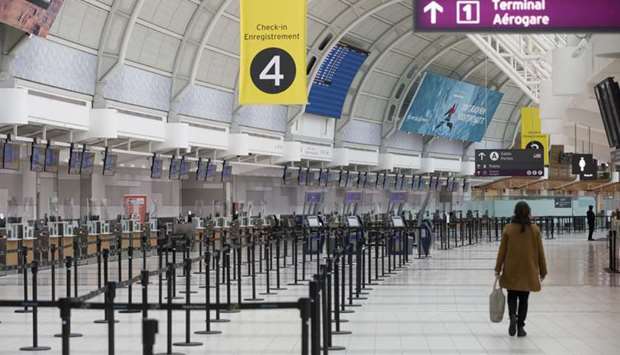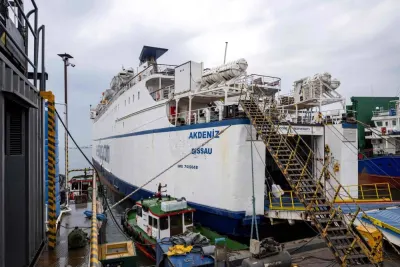Beyond the Tarmac - Aviation Page
Dozens of airlines have disappeared or filed for bankruptcy since the Covid-19 pandemic outbreak last year, which tore through in a tumultuous, unprecedented way -- leaving carriers in a deep hole, along with a constellation of aerospace manufacturers, airports and leasing firms.
More carriers are reportedly on life support, in danger of even getting swallowed by stronger players.
Airlines raised record amounts of money in 2020, according to Bloomberg, which estimates that more will be required in 2021. Stock sales and debt conversions will take on a greater importance as companies try to restore balance sheets to health.
Governments, which ponied up $220bn in state aid last year according to Moody’s, will continue to play a role.
According to the International Civil Aviation Organisation (ICAO), globally, the airline industry would have suffered $371bn in gross passenger operating revenues last year.
And there was an overall reduction of 50% of seats offered by airlines and reduction of 2.7bn passengers (-60%) in 2020, ICAO said recently.
Deep industry losses will continue into 2021, even though performance may improve over a period of time, global trade body of airlines -- IATA said.
A net loss of $38.7bn is expected in 2021 (deeper than the $15.8bn forecast in June), IATA noted.
In 2020, international passenger demand was down by 75%, domestic demand by nearly half, IATA data reveal. Air cargo fared better with the decline limited to 10%. That is making it a revenue lifeline for many airlines and routes.
Air passenger traffic measured by revenue passenger-kilometers plunged by 66% in 2020, which was the biggest shock that the aviation industry has experienced. Following the initial unprecedented shock, air traffic recovered gradually from the low point in April.
However, the recovery has stagnated after new waves of Covid-19 cases started in October.
The emergence of new virus variants made governments to take a more risk-averse approach, indicating a more challenging year ahead.
Governments reacted strongly by imposing new travel restrictions, and forward travel bookings have been falling sharply since late-December.
With the Covid-19 vaccination programmes being rolled out in many developed countries, industry captains now expect a steeper recovery of passenger demand to start in Q3, 2021.
“We need to get borders safely re-opened without quarantine so that people will fly again. Where barriers have been removed, travel rebounded. And with airlines expected to bleed cash at least until the fourth quarter of 2021 there is no time to lose,” said Alexandre de Juniac, IATA’s Director General and CEO.
The Covid-19 crisis challenged the industry for its very survival in 2020. In the face of a half trillion-dollar revenue drop (from $838bn in 2019 to $328bn) airlines cut costs by $365bn (from $795bn in 2019 to $430bn in 2020).
“The history books will record 2020 as the industry’s worst financial year, bar none. Airlines cut expenses by an average of a billion dollars a day over 2020 and will still rack-up unprecedented losses. Were it not for the $173bn in financial support by governments we would have seen bankruptcies on a massive scale,” said de Juniac.
On the assumption that there is some opening of borders by mid-2021 (either through testing or growing availability of a vaccine), overall revenues are expected to grow to $459bn ($131bn improvement on 2020, but still 45% below the $838bn achieved in 2019), IATA noted.
In comparison, costs are only expected to rise by $61bn, delivering overall improved financial performance. Airlines will still lose, however, $13.78 for each passenger carried. By the end of 2021 stronger revenues will improve the situation, but the first half of next year still looks extremely challenging.
Passenger numbers are expected to grow to 2.8bn in 2021. That would be a billion more travellers than in 2020, but still 1.7bn travellers short of 2019 performance.
Passenger yields are expected to be flat and the load factor may improve to 72.7% (an improvement on the 65.5% expected for 2020, but still well below the 82.5% achieved in 2019).
The cargo side of the business is expected to continue with strong performance. Improved business confidence and the important role that air cargo should play in vaccine distribution is expected to see cargo volumes grow to 61.2mn tonnes (up from 54.2mn tonnes in 2020 and essentially matching the 61.3mn tonnes carried in 2019).
A continued capacity crunch due to the slow reintroduction of belly capacity from passenger services combined with a higher proportion of time and temperature sensitive cargo (vaccines) will see a further 5% increase in yields. This will contribute to strong performance in cargo revenues which are expected to grow to a historic high of $139.8bn.
Clearly, the nightmare year of 2020 brought the airline industry’s first decade of sustained profitability to a shuddering halt.
While the industry will see improved performance in 2021 compared to 2020, the road to recovery may be long and difficult.
But the good news is the thirst for the freedom to fly has not been overcome by the current unprecedented global crisis.
*Pratap John is Business Editor at Gulf Times.




